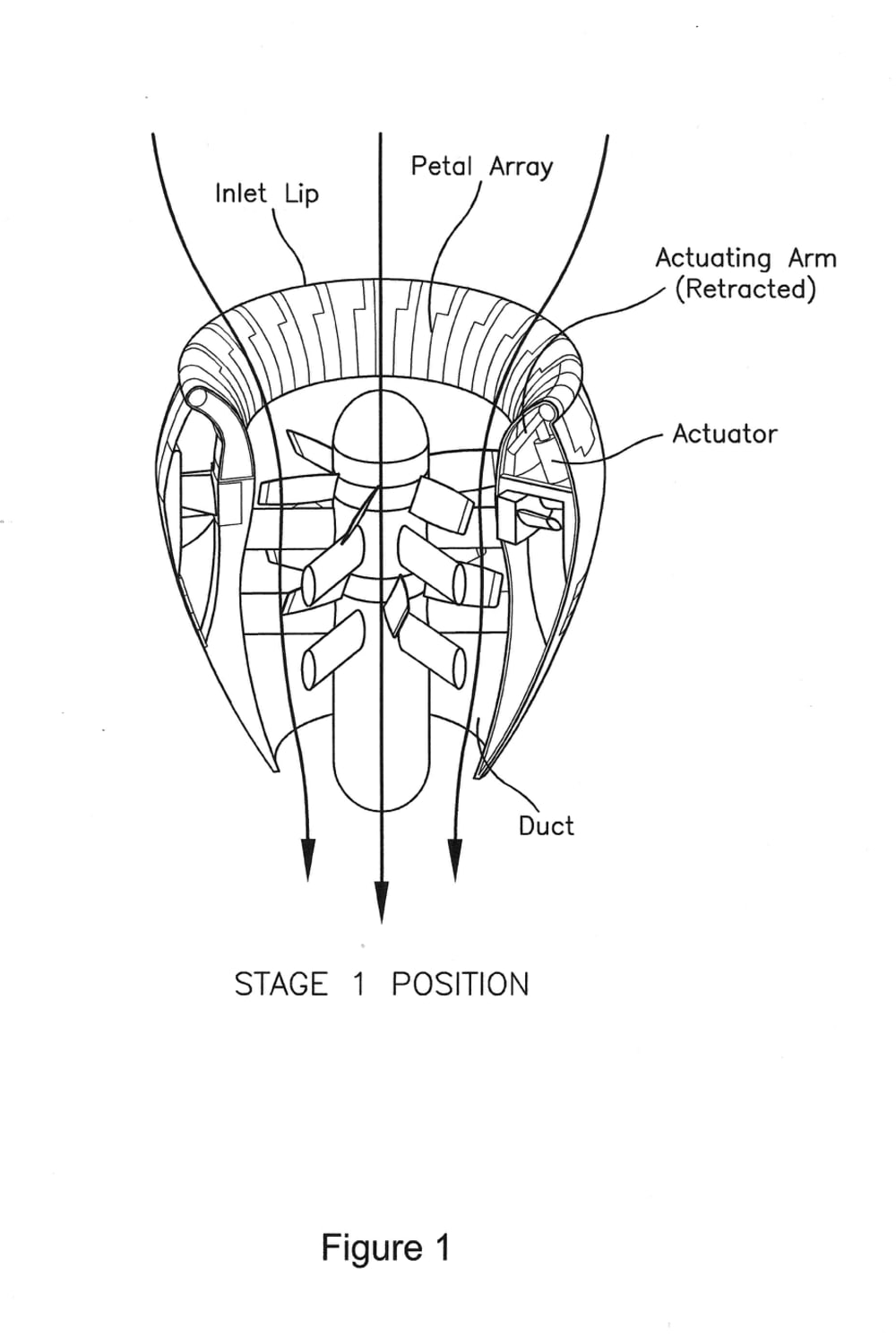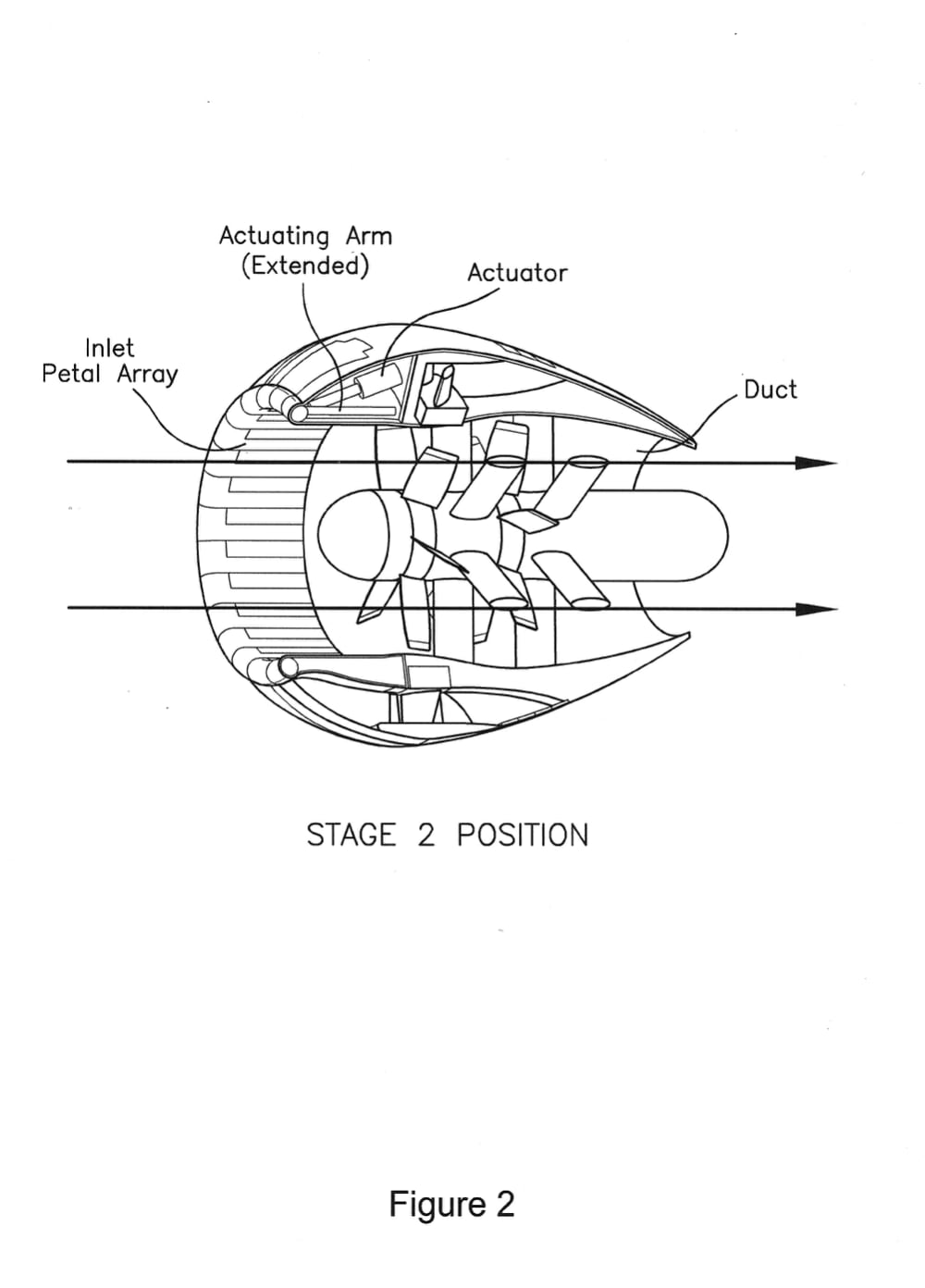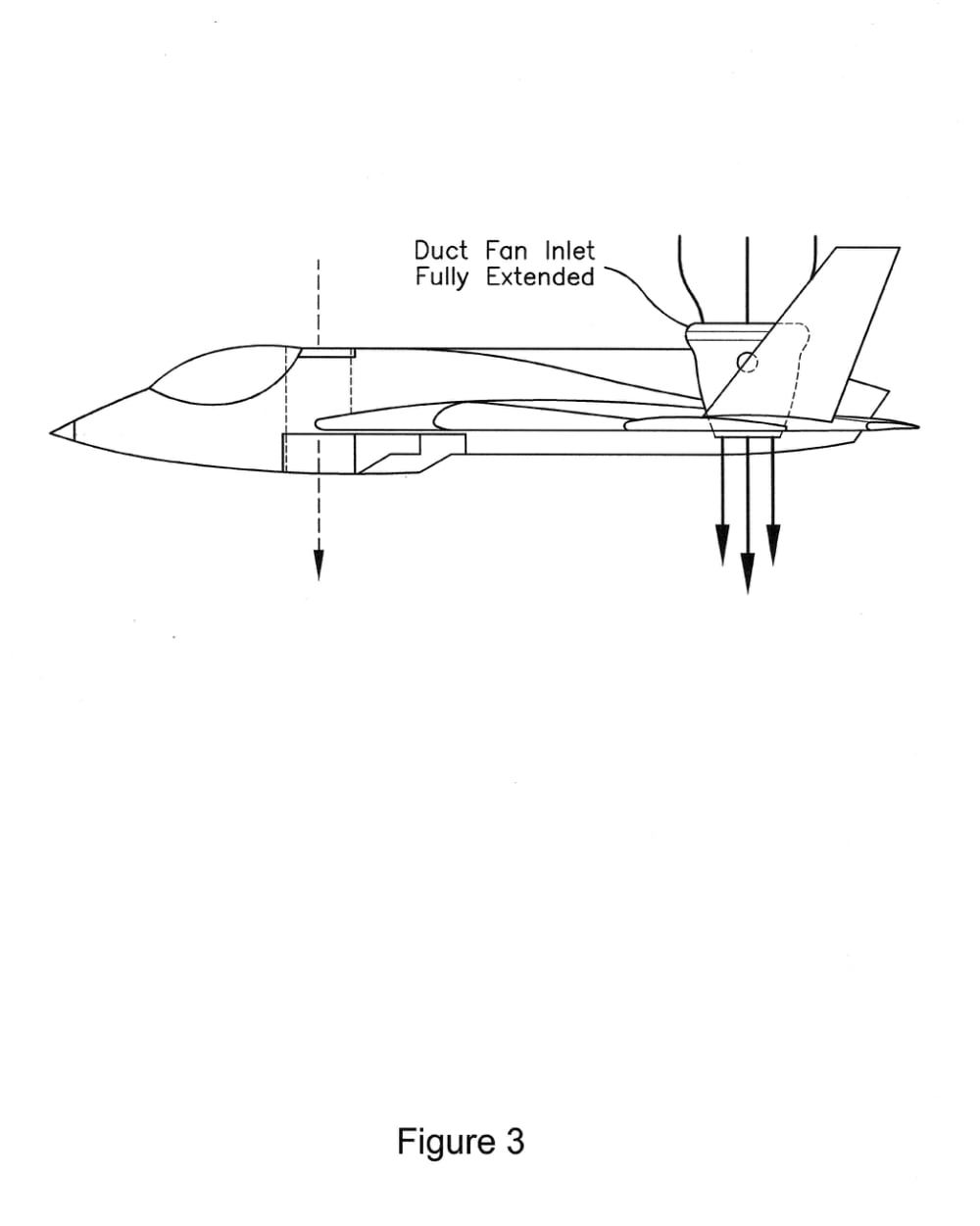
A Novel High Efficiency Variable Inlet Area Propulsor
The aircraft industry continues to search for a single aircraft capable of both high-speed cruise and efficient take-off and landing. Yet nearly all propulsion systems with nacelle inlets that fly today operate in a compromised state with at least one important flight condition existing in a sub-optimal state. In low speed flight, the inlets are often too constricted, in high speed flight, spillage often occurs. Thomas International, Inc., proposes a solution to the problem caused by the conflicting needs of highly efficient low speed lift related to propulsion versus efficient high-speed cruise with minimum spillage drag cruise with advanced technology propulsion units, the adjustable size inlet system, ASIS.
The ASIS propulsion system takes advantage of new forms of mechanical generation devices to create a ducted fan shape which is capable of presenting a larger bellmouth during take-off, low speed and/or hovering operations, then contracting the bellmouth configuration during high speed operations. By having this ability, the ducted fan propulsion units can be more closely optimized for all flight conditions. If one integrates the pressure differential around the duct radius and over the length of the duct it can be seen that as fluid flows through the duct with a typical bellmouth shape, then the duct itself generates a net upward thrust, without the demand for additional power.
The ASIS is able to expand its duct inlet area by over 100%. Tethered bench tests have shown that ASIS proprietary propulsion units provide 15%-35% increase in thrust compared to ducted fan units without ASIS, at the same power setting.
ASIS propulsion units have applications for both vertical take-off and landing VTOL aircraft and conventional aircraft. VTOL aircraft with tilting ASIS ducted fans operate with optimum vertical thrust for take-off, low speed, hover, extended loiter and high-speed efficient cruise. Conventional aircraft with ASIS ducts in fixed horizontal position optimize operational efficiencies in taxiing, take-off, transition and high-speed cruise conditions.
The Stage 1 position, shown in Figure 1 illustrates the adjustable size inlet system with the ducted fan tilted vertically and an adjustable size inlet with a plurality of overlapping inlet petals interconnected to form a continuous ring structure around the perimeter of ASIS. Actuation arms are connected to pull-push actuators that when retracted causes the solid hub to move in a downward direction causing a curvature of the overlapping inlet petal array, resulting in the bellmouth contour of the ASIS associated with Stage 1 position.
The Stage 2 position, shown in Figure 2 illustrates the ASIS with a ducted fan tilted horizontally for forward high-speed flight. When activated the push-pull actuator is extended, causing the actuating arm to rotate inward toward the main inner duct wall. The rotation induces circumferential sliding of the inner structural inlet tubes to accommodate a decrease in circumference of the adjustable size inlet.
A representative military aircraft ASIS-equipped is shown in Figure 3.
-
Awards
-
 2016 Top 100 Entries
2016 Top 100 Entries
Like this entry?
-
About the Entrant
- Name:Thomas Devine
- Type of entry:individual
- Patent status:pending








